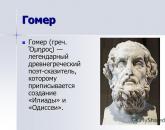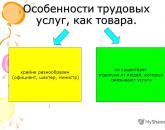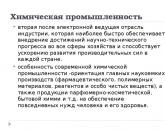Electrization of petroleum products. Causes and measures to protect against static electricity
The formation of static electricity charges is due to the fact that oil and oil products are dielectrics, and therefore, with intense friction of their particles against each other, as well as against air, electrostatic induction takes place.
To ensure the electrostatic intrinsic safety of tanks, it is necessary:
- ground all their electrically conductive components and parts;
- eliminate the processes of spraying and spraying oil (petroleum products), as well as the possibility of sparking during sampling and measuring the level of liquid in tanks;
- to limit the speed of filling the tanks, as well as the expiration of oil (petroleum products) during the erosion of bottom sediments.
Grounding devices used for protection against static electricity are combined with similar devices of electrical equipment or lightning shields. The resistance of these devices should not exceed 100 ohms.
A reinforced concrete tank is considered to be electrostatically grounded if the resistance at any point of its internal and external surface relative to the ground loop does not exceed 10 7 Ohm. In order to avoid spark discharges, it is not allowed to have ungrounded electrically conductive floating objects (pontoons, floating roofs, level gauge floats, etc.) on the surface of oil (petroleum products) in tanks. Their grounding is carried out by attaching to the tank body. Moreover, the pontoon or floating roof is connected to it by at least two flexible steel lintels.
The use of non-conductive floating devices and objects (in particular, those designed to reduce the loss of oil and oil products from evaporation) is allowed only in agreement with a specialized organization involved in protection against static electricity.
Technological pipelines and equipment located in the tank farm and on the tanks, throughout their entire length, must be a continuous electrical circuit and are connected to the ground loop at least in two places.
In order to avoid splashing and spraying of oil (petroleum products), leading to the formation of static electricity charges, the tanks are filled only to the level. If this is not possible (when filling tanks after flaw detection or repair), then the speed of pumping oil (petroleum products) into it should not exceed 1 m/s until the moment of flooding of the receiving and distributing pipe in tanks of the RVS type and until the pontoon or floating roof emerges in tanks of RVSP and RVSPK types.
When manually sampling or measuring the level of oil (petroleum products) in the tank through the gauge hatch, these operations must be performed no earlier than 10 minutes after the pumping (pumping) operation is stopped.
- for liquids with a specific volumetric electrical resistance of not more than 10 5 ohm m, the pumping speed into the reservoir should be no more than 10 m/s;
- for liquids with a specific volumetric electrical resistance of not more than 10 9 Ohm m - up to 5 m/s;
- for liquids with a specific volumetric electrical resistance of more than 10 9 ohm m, the allowable transport and outflow rates are established on the basis of special calculations.
To reduce the outflow rate of oils (petroleum products) with a specific volumetric electrical resistance above 10 9 Ohm m, it is recommended to use the so-called relaxation tanks, which are a horizontal section of the pipeline with a length L e and an increased diameter D e, located directly at the tank inlet:
D e = D √2 W; L e = 2.2 10 -11 ε ρ v ,
Where D is the diameter of the pipeline; W - fluid velocity in it, m/s; ε is the dielectric constant of oil (petroleum product); ρ v - specific volume electrical resistance of the liquid, Ohm·m.
6.15.1. Technological operations with petroleum products, which are good dielectrics, are accompanied by the formation of electric charges. A large number of charges can be created during the side filling of light oil products into tanks, top and bottom loading into road and rail tanks, loading ships into tanks, in the gas space of which explosive concentrations of a mixture of oil vapors with air can occur.
6.15.2. To eliminate the danger of static electricity discharges during technological operations with light oil products, the following measures should be taken:
- grounding of tanks, cisterns, pipelines, level measuring instruments and sampling;
- the use of additives to increase the conductivity of petroleum products;
- reducing the intensity of generation of static electricity charges by reducing the speed of loading light oil products into tanks, ships, road and rail tanks;
- neutralization by radioactive radiation;
- grounding of tanks and transport containers;
- neutralization of static electricity charges in pipelines using electrodes;
- use of inert gases.
6.15.3. Grounding devices for protection against static electricity should, as a rule, be combined with grounding devices for electrical equipment and lightning protection. Such grounding devices must be made in accordance with the requirements of the PUE, SNiP 3.05.06-85, GOST 12.1.030, RD 34.21.122-87.
The resistance of a grounding device intended solely for protection against static electricity is allowed not more than 100 ohms.
6.15.4. All metallic and electrically conductive non-metallic parts of process equipment must be grounded, regardless of the use of other measures to protect against static electricity.
6.15.5. Metallic and electrically conductive non-metallic equipment, pipelines, ventilation ducts and thermal insulation casings of pipelines must constitute a continuous electrical circuit throughout, which must be connected to the ground loop every 40-50 m at least at two points.
6.15.6. A paint coating applied to grounded metal equipment is considered to be electrostatically grounded if the resistance of the outer surface of the coating relative to the grounded equipment does not exceed 10 ohms.
Resistance measurement should be carried out at a relative humidity of the ambient air not higher than 60%, and the contact area of the measuring metal electrode with the surface of the equipment should not exceed 30 cm2.
6.15.7. Tank trucks under loading and unloading of flammable liquids must be connected to a grounding device during the entire time of filling and emptying.
Control devices for connecting grounding conductors must meet the condition of electrostatic intrinsic safety in accordance with GOST 12.1.018.
It is not allowed to connect ground conductors to painted and contaminated metal parts of tank trucks.
Opening the hatch of a tanker and immersing a filling pipe (sleeve) into it is allowed only after the tanker is grounded. Disconnection of the grounding conductors from the tanker is carried out after completion of filling or draining of oil products, lifting the filling pipe from the mouth of the tanker, disconnecting the drain hose.
6.15.8. Sleeves made of non-conductive materials with metal tips used for loading oil products must be wrapped around copper wire with a diameter of at least 2 mm with a turn pitch of not more than 100 mm. One end of the wire is connected to the metal grounding parts of the product pipeline, and the other end is connected to the tip of the hose. When using reinforced or electrically conductive hoses, their wrapping is not required, provided that the fittings or electrically conductive rubber layer are connected to a grounded product pipeline and a metal tip of the hose. Tips of sleeves should be made of the metals excluding sparking.
6.15.9. Petroleum products must be pumped into tanks and tanks without splashing or violent mixing. Pouring of light oil products in a free-falling jet is not allowed. The distance from the end of the filling pipe of the sleeve to the bottom of the tank or cistern should not exceed 200 mm, and if this is not possible, then the jet should be directed along the wall.
6.15.10. To prevent the formation of dangerous discharges of static electricity, the speed of filling light oil products into tanks, tanks and tanks of ships should not exceed the maximum allowable value at which the charge brought with the flow of oil into the tank, tank, tank of the ship could not cause a spark discharge from its surface, the energy of which is sufficient to ignite the vapor-air mixture. The maximum allowable outflow rates of light oil products depend on: the type of filling (side, top, bottom); properties of the oil product; content and size of impurities; properties of the material and the state of the surface of the pipeline walls; dimensions of the pipeline and tanks; container shapes.
The establishment of maximum permissible values for loading light oil products into reservoirs, tanks and tanks of ships is carried out by specialized organizations.
If it is necessary to load oil products at speeds exceeding the maximum allowable, simultaneously with grounding, additional measures to reduce the electrization of petroleum products, specified in 6.15.2.
6.15.11. When filling an empty tank, light oil products must be fed into it at a speed of no more than 1 m/s until the upper generatrix of the receiving and distributing pipe is flooded.
6.15.12. To prevent the risk of spark discharges, there should be no ungrounded electrically conductive floating objects on the surface of light oil products. Pontoons made of electrically conductive materials must be grounded using flexible grounding conductors with a cross section of at least 6 mm2 (at least two).
Grounding conductors should be connected to the roof of the tank at one end, and to the pontoon at the other.
Pontoons made of non-conductive materials must be electrostatically protected. The establishment of the type of electrostatic protection of such pontoons is carried out by specialized organizations.
6.15.13. Manual sampling of the oil product from the tanks is allowed no earlier than 10 minutes after the oil product loading is stopped.
The sampler must have a conductive copper cable welded (soldered) to its body. Prior to sampling, the sampler must be securely grounded by connecting a copper cable to a terminal clamp located primarily on the railing of the tank roof.
Cable integrity should be checked before each use of the sampler.
6.15.14. The floors of bottling rooms must be made of electrically conductive materials or grounded metal sheets must be laid on them, on which containers filled with oil products are installed.
It is allowed to carry out grounding of barrels, cans and other containers by connecting them to the grounding device with a copper cable with a tip for a bolt, screw, hairpin.
6.15.15. It is not allowed to carry out work inside tanks, where the formation of explosive concentrations of vapor-air mixtures is possible, in overalls, jackets and other outerwear from electrifying materials. Work should be carried out only in overalls established for these purposes.
6.15.16. Inspection and maintenance of grounding devices for protection against manifestations of static electricity should be carried out simultaneously with the inspection and current repairs technological and electrical equipment.
Measurements of the electrical resistance of grounding devices should be carried out at least once a year, and the results of measurements and repairs should be recorded in the journal for the operation of devices to protect against manifestations of static electricity ( Annex 11).
4.4.1. To prevent the occurrence of spark discharges from the surface of equipment, oil and oil products, as well as from the human body, it is necessary to provide, taking into account the specifics of production, the following measures to ensure that the emerging charge of static electricity drains:
- reduction in the intensity of generating a charge of static electricity;
- device for grounding equipment of tanks and communications, as well as ensuring constant contact of the human body with grounding;
- reduction of specific volumetric and surface electrical resistance;
- the use of radioisotope, induction and other neutralizers.
4.4.2. Grounding devices for protection against static electricity should, as a rule, be combined with grounding devices for electrical equipment. Such grounding devices must be made in accordance with the requirements of PUE-85, GOST 21130-75 SN 102-76, Instructions for the installation of grounding networks. The resistance of a grounding device intended solely for protection against static electricity is allowed not more than 100 ohms.
All metallic and electrically conductive non-metallic parts of tank equipment must be grounded, whether or not other ESD protection measures are in place.
A paint coating applied to grounded metal equipment, internal and external walls of tanks, is considered electrostatic grounding if the resistance of the outer surface of the coating relative to the grounded equipment does not exceed 10 ohms.
4.4.3 Tanks with a capacity of more than 50 m 3 (with the exception of vertical diameters up to 2.5 m) must be connected to grounding conductors using at least two grounding conductors at diametrically opposite points.
4.4.4. Petroleum products must be pumped into tanks without splashing, spraying or violent mixing. Loading oil products with a free-falling jet is not allowed.
The distance from the end of the loading pipe to the bottom of the tank should not exceed 200 mm, and if possible, the jet should be directed along the wall. In this case, the shape of the end of the pipe and the feed rate of the oil product must be chosen in such a way as to prevent splashing.
4.4.5. The speed of movement of oil products through pipelines must be limited in such a way that the charge brought into the tank with the flow of oil product cannot cause a spark discharge from its surface, the energy of which is sufficient to ignite environment. The allowable speeds of liquid movement through pipelines and their outflow into tanks depend on the following conditions that affect the relaxation of charges: type of filling, properties of the oil product, content and size of insoluble impurities, properties of the material of the walls of the pipeline, tank.
4.4.6. For petroleum products with a specific volume electrical resistance of not more than 10 9 Ohm. m speed of movement and expiration are allowed up to 5 m/s.
For petroleum products with a specific volumetric electrical resistance of more than 10 9 ohm.m, the allowable speeds of transportation and outflow are set for each oil product separately.
To reduce the charge density to a safe value in a liquid flow having a specific volumetric electrical resistance of more than 10 9 Ohm.m, if it is necessary to transport them through pipelines at a speed exceeding the safe one, special devices for removing charges should be used.
A device for removing charges from a liquid product should be installed on the loading pipeline directly at the entrance to the tank being filled so that at the maximum of the transport speeds used, the time of movement of the product through the loading nozzle after leaving the device until it flows into the device does not exceed 0.1 charge relaxation time constant in liquid.
If this condition cannot be met structurally, then the discharge of the charge arising in the loading nozzle must be ensured inside the reservoir being filled before the charged flow exits to the surface of the liquid in the reservoir.
Notes. As devices for removing charge from a liquid product, neutralizers with strings can be used, the rules for the selection, design, installation and operation of which are set out in RTM 6.28-008-78 Devices for removing charge from a liquid flow with extended discharge electrodes (neutralizers with strings).
As devices for removing the charge inside the tank being filled, cages made of a grounded metal mesh can be used, covering a certain volume at the end of the loading nozzle so that the charged flow from the nozzle enters the cage. In this case, the cell volume must be at least V = Q τ /3600, where V is the cell volume, m 3; Q is the oil product pumping speed, m 3 /h; τ is the charge relaxation time constant in the oil product, s.
4.4.7. Data on the electrical parameters of light oil products and nomograms for determining the permissible pumping speeds are given in the Recommendations for the Prevention of Dangerous Electrification of Oil Products When Filling into Vertical and Horizontal Tanks, Automobile and Rail Tank Cars, approved on 12/XI.85 by the RSFSR Goskomnefteprodukt.
4.4.8. Petroleum products must enter the tank below the level of the remaining oil product in it.
When filling an empty tank, oil products must be fed into it at a speed of no more than 1 m/s until the end of the intake and distribution pipe is flooded.
With further filling, the speed should be chosen taking into account the requirements of clause 4.4.6.
4.4.9. To prevent the risk of spark discharges, there should be no ungrounded electrically conductive floating objects on the surface of oil products.
4.4.10. Pontoons made of electrically conductive materials designed to reduce the loss of oil products from evaporation must be grounded using at least two flexible grounding conductors with a cross section of at least 6 mm 2 connected to the pontoon at diametrically opposite points.
4.4.11. Pontoons made of non-conductive materials must be electrostatically protected.
4.4.12. Manual sampling of oil products from tanks is allowed no earlier than 10 minutes after the cessation of movement of the oil product.
Static electricity refers to electrical charges that are in a state of relative rest, distributed on the surface or in the volume of a dielectric or on the surface of an insulated conductor.
The contact potential difference is different and depends on the dielectric properties of the materials in contact, their physical state, the pressure with which the surfaces are pressed against each other, the speed of movement, the humidity and temperature of the environment, etc.
Electrification of solids is possible during the movement of belt drives and conveyor belts.
As studies show, intense electrization is observed when particles collide with the surface of pipelines in the process of pneumatic transportation of dust-like materials, deformation, crushing (spraying) of substances, relative movement of two bodies in contact, layers of liquid or bulk materials, with intensive movement, mixing, crystallization and evaporation of substances.
In addition, it is possible to electrify liquids with low electrical conductivity, including when filling, draining and pumping toluene, gasoline and other petroleum products from ungrounded tanks, cisterns, barrels; when transporting liquids in ungrounded containers; when they are filtered through porous partitions and meshes, etc. The danger of static electricity is mainly due to the possibility of spark discharge, which can lead to an explosion, fire and, consequently, injury to people.
A discharge of static electricity occurs when the strength of the electrostatic field reaches a breakdown (critical) value. For air, the breakdown voltage is approximately 30 kV/cm.
The physiological effect of static electricity on the human body depends on the amount released during the discharge of electrical energy. The person may experience mild, moderate, or severe jabs or blows. Pricks and pushes are not life-threatening, since the current strength is negligible. However, reflex movements are possible, leading to a fall from a height, contact with unprotected rotating parts of machines, etc.
On the railway transport from all the variety technological processes, leading to the appearance of static electricity, the main ones are the transportation of various liquids in tanks, the pumping of petroleum products on loading and unloading racks.
Consider the process of electrification of a liquid. The mechanism of electrification of a liquid moving through a pipe is explained by the mechanical destruction of the electrical double layer that appears at the boundary with the solid phase. Since any dielectric liquid always contains a certain amount of electric charge carriers, a double electric layer is formed at the interface between the liquid and solid phases.
In this case, charges of the same sign, deposited on the surface of a solid wall, are neutralized, and charges of the opposite sign, located in the liquid volume, are carried away by the flow and enter the receiving tank. If there is a flammable vapor-air mixture in the tank above the liquid surface, then the possibility of an explosion and fire due to the discharge of static electricity between the surface of the electrified liquid and the walls of the tank or other grounded structural elements cannot be ruled out.
The formation of static electricity charges also occurs when filling tanks with a free-falling jet, with splashing.
In this case, small and large drops acquire charges of opposite signs. A cloud of small drops is formed, which creates an electric field with a high gradient above the surface of the liquid. As a result of these phenomena, electrostatic discharges occur.
The main factors determining the intensity of the electrization of petroleum products, the purity of petroleum products and their electrical resistance; speed and nature of movement (continuous jet or spray); metal material of pipelines, tanks and other devices through which oil products move, as well as the condition of their inner surface. Oil products are especially intensively electrified during their filtration.
It has been established that gasoline, flowing through pipes, is charged negatively, and the pipeline is positively charged.
The value of the total charge transferred by the electrified product to the receiving tank:
where: -- product charge, c/l;
Amount of pumped product, l.
Data on the minimum ignition energy of steam and gas-air mixtures (at a pressure of 0.1 MPa and a temperature of 200C) are given in Table 11.1
Table 11.1
To prevent the possibility of dangerous spark discharges from the surface of equipment, processed substances, as well as from the human body, the following measures are provided (taking into account the specifics of production) to ensure the flow of static electricity charges that have arisen:
Removal of charges by reducing the specific volumetric and surface electrical resistances;
Neutralization of charges through the use of induction neutralizers, etc.;
Removal of charges with the help of equipment and communications grounding device.
Among the measures to protect against static electricity, the most widely used for the removal of electrostatic charges has received grounding, which is used in conjunction with the above measures. Grounding is subject to loading risers of overpasses for filling tanks and rails within the front of loading and unloading operations. Grounding devices for protection against static electricity are combined with protective or lightning protection grounding devices. In this case, the maximum permissible resistance of a grounding device designed exclusively for the removal of static electricity should not exceed 100 ohms. Non-metallic equipment will be electrically grounded if the resistance of any point relative to the ground loop does not exceed 107 ohms.
With a low capacitance C, the current spreading resistance of the grounding device can be higher than 107 ohms.
Let us consider in which case safety from possible discharges of static electricity will be ensured when filling into an insulated tank with a capacity of M = 1000 liters. gasoline at a speed v = 100 l/min. Gasoline electrification rate = 1.1 10-8 A s/l.
Let's determine the potential on the tank by the end of filling. The total charge transferred by the electrified gasoline to the tank will be.
Popular
- Features of the nature of South America presentation
- Types of special exercises to improve the quality of reading in primary school students
- Presentation on the topic "genetics" Ready-made presentations on the topic of genetics
- Presentation "analytical report for the inter-certification period"
- Presentation of the analytical report of the history teacher
- Etiology and pathogenesis of atherosclerosis
- History of number systems presentation, report Presentation on the topic Babylonian number system
- Apple in mythology and Russian folklore Big Apple in New York
- The theme of the presentation is the history of medicine geniuses of medicine Hippocrates Doctrine of the disease
- Graduation in elementary school




